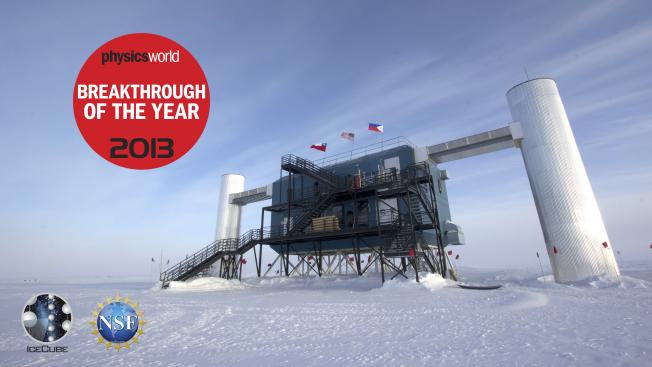CTA contributions to the 33rd International Cosmic Ray Conference
(ICRC2013)
ArXiv 1307.2232 (2013)
Authors:
The CTA Consortium, O Abril, BS Acharya, M Actis, G Agnetta, JA Aguilar, F Aharonian, M Ajello, A Akhperjanian, M Alcubierre, J Aleksic, R Alfaro, E Aliu, AJ Allafort, D Allan, I Allekotte, R Aloisio, E Amato, G Ambrosi, M Ambrosio, J Anderson, EO Angüner, LA Antonelli, V Antonuccio, M Antonucci, P Antoranz, A Aravantinos, A Argan, T Arlen, C Aramo, T Armstrong, H Arnaldi, L Arrabito, K Asano, T Ashton, HG Asorey, T Aune, Y Awane, H Baba, A Babic, N Baby, J Bähr, A Bais, C Baixeras, S Bajtlik, M Balbo, D Balis, C Balkowski, J Ballet, A Bamba, R Bandiera, A Barber, C Barbier, M Barceló, A Barnacka, J Barnstedt, U Barres de Almeida, JA Barrio, A Basili, S Basso, D Bastieri, C Bauer, A Baushev, U Becciani, J Becerra, J Becerra, Y Becherini, KC Bechtol, J Becker Tjus, V Beckmann, W Bednarek, B Behera, M Belluso, W Benbow, J Berdugo, D Berge, K Berger, F Bernard, T Bernardino, K Bernlöhr, B Bertucci, N Bhat, S Bhattacharyya, B Biasuzzi, C Bigongiari, A Biland, S Billotta, T Bird, E Birsin, E Bissaldi, J Biteau, M Bitossi, S Blake, O Blanch Bigas, P Blasi, A Bobkov, V Boccone, M Böttcher, L Bogacz, J Bogart, M Bogdan, C Boisson, J Boix Gargallo, J Bolmont, G Bonanno, A Bonardi, T Bonev, P Bonifacio, G Bonnoli, P Bordas, A Borgland, J Borkowski, R Bose, O Botner, A Bottani, L Bouchet, M Bourgeat, C Boutonnet, A Bouvier, S Brau-Nogué, I Braun, T Bretz, M Briggs, M Brigida, T Bringmann, R Britto, P Brook, P Brun, L Brunetti, P Bruno, N Bucciantini, T Buanes, J Buckley, R Bühler, V Bugaev, A Bulgarelli, T Bulik, G Busetto, S Buson, K Byrum, M Cailles, R Cameron, J Camprecios, R Canestrari, S Cantu, M Capalbi, P Caraveo, E Carmona, A Carosi, R Carosi, J Carr, J Carter, P-H Carton, R Caruso, S Casanova, E Cascone, M Casiraghi, A Castellina, O Catalano, S Cavazzani, S Cazaux, P Cerchiara, M Cerruti, E Chabanne, P Chadwick, C Champion, R Chaves, P Cheimets, A Chen, J Chiang, L Chiappetti, M Chikawa, VR Chitnis, F Chollet, A Christof, J Chudoba, M Cieślar, A Cillis, M Cilmo, A Codino, J Cohen-Tanugi, S Colafrancesco, P Colin, J Colome, S Colonges, M Compin, P Conconi, V Conforti, V Connaughton, J Conrad, JL Contreras, P Coppi, J Coridian, P Corona, D Corti, J Cortina, L Cossio, A Costa, H Costantini, G Cotter, B Courty, S Couturier, S Covino, G Crimi, SJ Criswell, J Croston, G Cusumano, M Dafonseca, O Dale, M Daniel, J Darling, I Davids, F Dazzi, A de Angelis, V De Caprio, F De Frondat, EM de Gouveia Dal Pino, I de la Calle, GA De La Vega, R de los Reyes Lopez, B de Lotto, A De Luca, M de Naurois, Y de Oliveira, E de Oña Wilhelmi, F de Palma, V de Souza, G Decerprit, G Decock, C Deil, E Delagnes, G Deleglise, C Delgado, D della Volpe, P Demange, G Depaola, A Dettlaff, T Di Girolamo, C Di Giulio, A Di Paola, F Di Pierro, G di Sciascio, C Díaz, J Dick, R Dickherber, H Dickinson, V Diez-Blanco, S Digel, D Dimitrov, G Disset, A Djannati-Ataï, M Doert, M Dohmke, W Domainko, D Dominis Prester, A Donat, D Dorner, M Doro, J-L Dournaux, G Drake, D Dravins, L Drury, F Dubois, R Dubois, G Dubus, C Dufour, D Dumas, J Dumm, D Durand, V Dwarkadas, J Dyks, M Dyrda, J Ebr, E Edy, K Egberts, P Eger, S Einecke, C Eleftheriadis, S Elles, D Emmanoulopoulos, D Engelhaupt, R Enomoto, J-P Ernenwein, M Errando, A Etchegoyen, PA Evans, A Falcone, A Faltenbacher, D Fantinel, K Farakos, C Farnier, E Farrell, G Fasola, BW Favill, E Fede, S Federici, S Fegan, F Feinstein, D Ferenc, P Ferrando, M Fesquet, P Fetfatzis, A Fiasson, E Fillin-Martino, D Fink, C Finley, JP Finley, M Fiorini, R Firpo Curcoll, E Flandrini, H Fleischhack, H Flores, D Florin, W Focke, C Föhr, E Fokitis, L Font, G Fontaine, M Fornasa, A Förster, L Fortson, N Fouque, A Franckowiak, FJ Franco, A Frankowski, C Fransson, GW Fraser, R Frei, L Fresnillo, C Fruck, D Fugazza, Y Fujita, Y Fukazawa, Y Fukui, S Funk, W Gäbele, S Gabici, R Gabriele, A Gadola, N Galante, D Gall, Y Gallant, J Gámez-García, M Garczarczyk, B García, R Garcia López, D Gardiol, F Gargano, D Garrido, L Garrido, D Gascon, M Gaug, J Gaweda, L Gebremedhin, N Geffroy, L Gerard, A Ghedina, M Ghigo, P Ghislain, E Giannakaki, F Gianotti, S Giarrusso, G Giavitto, B Giebels, N Giglietto, V Gika, M Giomi, P Giommi, F Giordano, N Girard, E Giro, A Giuliani, T Glanzman, J-F Glicenstein, N Godinovic, V Golev, M Gomez Berisso, J Gómez-Ortega, MM Gonzalez, A González, F González, A González Muñoz, KS Gothe, T Grabarczyk, M Gougerot, R Graciani, P Grandi, F Grañena, J Granot, G Grasseau, R Gredig, A Green, T Greenshaw, T Grégoire, A Grillo, O Grimm, M-H Grondin, J Grube, M Grudzinska, V Gruev, S Grünewald, J Grygorczuk, V Guarino, S Gunji, G Gyuk, D Hadasch, A Hagedorn, R Hagiwara, J Hahn, N Hakansson, A Hallgren, N Hamer Heras, S Hara, MJ Hardcastle, D Harezlak, J Harris, T Hassan, K Hatanaka, T Haubold, A Haupt, T Hayakawa, M Hayashida, R Heller, F Henault, G Henri, G Hermann, R Hermel, A Herrero, O Hervet, N Hidaka, JA Hinton, K Hirotani, D Hoffmann, W Hofmann, P Hofverberg, J Holder, JR Hörandel, D Horns, D Horville, J Houles, M Hrabovsky, D Hrupec, H Huan, B Huber, J-M Huet, G Hughes, TB Humensky, J Huovelin, J-F Huppert, A Ibarra, D Ikawa, JM Illa, D Impiombato, S Incorvaia, S Inoue, Y Inoue, F Iocco, K Ioka, GL Israel, C Jablonski, A Jacholkowska, J Jacquemier, M Jamrozy, M Janiak, P Jean, C Jeanney, JJ Jimenez, T Jogler, C Johnson, T Johnson, L Journet, C Juffroy, I Jung, P Kaaret, S Kabuki, M Kagaya, J Kakuwa, C Kalkuhl, R Kankanyan, A Karastergiou, K Kärcher, M Karczewski, S Karkar, J Kasperek, D Kastana, H Katagiri, J Kataoka, K Katarzyński, U Katz, N Kawanaka, D Kazanas, N Kelley-Hoskins, B Kellner-Leidel, H Kelly, E Kendziorra, B Khélifi, DB Kieda, T Kifune, T Kihm, T Kishimoto, K Kitamoto, W Kluźniak, C Knapic, J Knapp, J Knödlseder, F Köck, J Kocot, K Kodani, J-H Köhne, K Kohri, K Kokkotas, D Kolitzus, N Komin, I Kominis, Y Konno, H Köppel, P Korohoda, K Kosack, G Koss, R Kossakowski, R Koul, G Kowal, S Koyama, J Kozioł, T Krähenbühl, J Krause, H Krawzcynski, F Krennrich, A Krepps, A Kretzschmann, R Krobot, P Krueger, H Kubo, VA Kudryavtsev, J Kushida, A Kuznetsov, A La Barbera, N La Palombara, V La Parola, G La Rosa, K Lacombe, G Lamanna, J Lande, D Languignon, JS Lapington, P Laporte, B Laurent, C Lavalley, T Le Flour, A Le Padellec, S-H Lee, WH Lee, J-P Lefèvre, H Leich, MA Leigui de Oliveira, D Lelas, J-P Lenain, R Leoni, DJ Leopold, T Lerch, L Lessio, G Leto, B Lieunard, S Lieunard, R Lindemann, E Lindfors, A Liolios, A Lipniacka, H Lockart, T Lohse, S Lombardi, F Longo, A Lopatin, M Lopez, R López-Coto, A López-Oramas, A Lorca, E Lorenz, F Louis, P Lubinski, F Lucarelli, H Lüdecke, J Ludwin, PL Luque-Escamilla, W Lustermann, O Luz, E Lyard, MC Maccarone, TJ Maccarone, GM Madejski, A Madhavan, M Mahabir, G Maier, P Majumdar, G Malaguti, G Malaspina, S Maltezos, A Manalaysay, A Mancilla, D Mandat, G Maneva, A Mangano, P Manigot, K Mannheim, I Manthos, N Maragos, A Marcowith, M Mariotti, M Marisaldi, S Markoff, A Marszałek, C Martens, J Martí, J-M Martin, P Martin, G Martínez, F Martínez, M Martínez, F Massaro, A Masserot, A Mastichiadis, A Mathieu, H Matsumoto, F Mattana, S Mattiazzo, A Maurer, G Maurin, S Maxfield, J Maya, D Mazin, L Mc Comb, A McCann, N McCubbin, I McHardy, R McKay, K Meagher, C Medina, C Melioli, D Melkumyan, D Melo, S Mereghetti, P Mertsch, M Meucci, M Meyer, J Michałowski, P Micolon, A Mihailidis, T Mineo, M Minuti, N Mirabal, F Mirabel, JM Miranda, R Mirzoyan, A Mistò, T Mizuno, B Moal, R Moderski, I Mognet, E Molinari, M Molinaro, T Montaruli, C Monte, I Monteiro, P Moore, A Moralejo Olaizola, M Mordalska, C Morello, K Mori, G Morlino, A Morselli, F Mottez, Y Moudden, E Moulin, I Mrusek, R Mukherjee, P Munar-Adrover, H Muraishi, K Murase, A StJ Murphy, S Nagataki, T Naito, D Nakajima, T Nakamori, K Nakayama, C Naumann, D Naumann, M Naumann-Godo, P Nayman, D Nedbal, D Neise, L Nellen, A Neronov, V Neustroev, N Neyroud, L Nicastro, J Nicolau-Kukliński, A Niedźwiecki, J Niemiec, D Nieto, A Nikolaidis, K Nishijima, K-I Nishikawa, K Noda, S Nolan, R Northrop, D Nosek, N Nowak, A Nozato, L Oakes, PT O'Brien, Y Ohira, M Ohishi, S Ohm, H Ohoka, T Okuda, A Okumura, J-F Olive, RA Ong, R Orito, M Orr, JP Osborne, M Ostrowski, LA Otero, N Otte, E Ovcharov, I Oya, A Ozieblo, L Padilla, I Pagano, S Paiano, D Paillot, A Paizis, S Palanque, M Palatka, J Pallota, M Palatiello, K Panagiotidis, J-L Panazol, D Paneque, M Panter, MR Panzera, R Paoletti, A Papayannis, G Papyan, JM Paredes, G Pareschi, J-M Parraud, D Parsons, G Pauletta, M Paz Arribas, M Pech, G Pedaletti, V Pelassa, D Pelat, MDC Perez, M Persic, P-O Petrucci, B Peyaud, A Pichel, D Pieloth, E Pierre, S Pita, G Pivato, F Pizzolato, M Platino, Ł Platos, R Platzer, S Podkladkin, L Pogosyan, M Pohl, G Pojmanski, JD Ponz, W Potter, J Poutanen, E Prandini, J Prast, R Preece, F Profeti, H Prokoph, M Prouza, M Proyetti, I Puerto-Giménez, G Pühlhofer, I Puljak, M Punch, R Pyzioł, EJ Quel, J Quesada, J Quinn, A Quirrenbach, E Racero, S Rainò, PJ Rajda, M Rameez, P Ramon, R Rando, RC Rannot, M Rataj, M Raue, D Ravignani, P Reardon, O Reimann, A Reimer, O Reimer, K Reitberger, M Renaud, S Renner, B Reville, W Rhode, M Ribó, M Ribordy, G Richards, MG Richer, J Rico, J Ridky, F Rieger, P Ringegni, J Ripken, PR Ristori, A Rivière, S Rivoire, L Rob, G Rodeghiero, U Roeser, R Rohlfs, G Rojas, P Romano, W Romaszkan, GE Romero, SR Rosen, S Rosier Lees, D Ross, G Rouaix, J Rousselle, S Rousselle, AC Rovero, F Roy, S Royer, B Rudak, C Rulten, M Rupiński, F Russo, F Ryde, O Saavedra, B Sacco, EO Saemann, A Saggion, V Sahakian, K Saito, T Saito, Y Saito, N Sakaki, R Sakonaka, A Salini, F Sanchez, M Sanchez-Conde, A Sandoval, H Sandaker, E Sant'Ambrogio, A Santangelo, EM Santos, A Sanuy, L Sapozhnikov, S Sarkar, N Sartore, H Sasaki, K Satalecka, M Sawada, V Scalzotto, V Scapin, M Scarcioffolo, J Schafer, T Schanz, S Schlenstedt, R Schlickeiser, T Schmidt, J Schmoll, P Schovanek, M Schroedter, A Schubert, C Schultz, J Schultze, A Schulz, K Schure, F Schussler, T Schwab, U Schwanke, J Schwarz, S Schwarzburg, T Schweizer, S Schwemmer, U Schwendicke, C Schwerdt, A Segreto, J-H Seiradakis, GH Sembroski, M Servillat, K Seweryn, M Sharma, M Shayduk, RC Shellard, J Shi, T Shibata, A Shibuya, S Shore, E Shum, E Sideras-Haddad, L Sidoli, M Sidz, J Sieiro, M Sikora, J Silk, A Sillanpää, BB Singh, G Sironi, J Sitarek, C Skole, R Smareglia, A Smith, D Smith, J Smith, N Smith, D Sobczyńska, H Sol, G Sottile, M Sowiński, F Spanier, D Spiga, S Spyrou, V Stamatescu, A Stamerra, RLC Starling, Ł Stawarz, R Steenkamp, C Stegmann, S Steiner, C Stella, N Stergioulas, R Sternberger, M Sterzel, F Stinzing, M Stodulski, Th Stolarczyk, U Straumann, E Strazzeri, L Stringhetti, A Suarez, M Suchenek, R Sugawara, K-H Sulanke, S Sun, AD Supanitsky, T Suric, P Sutcliffe, JM Sykes, M Szanecki, T Szepieniec, A Szostek, G Tagliaferri, H Tajima, H Takahashi, K Takahashi, L Takalo, H Takami, G Talbot, J Tammi, M Tanaka, S Tanaka, J Tasan, M Tavani, J-P Tavernet, LA Tejedor, I Telezhinsky, P Temnikov, C Tenzer, Y Terada, R Terrier, M Teshima, V Testa, D Tezier, J Thayer, D Thuermann, L Tibaldo, L Tibaldo, O Tibolla, A Tiengo, MC Timpanaro, M Tluczykont, CJ Todero Peixoto, F Tokanai, M Tokarz, K Toma, A Tonachini, K Torii, M Tornikoski, DF Torres, M Torres, S Toscano, G Toso, G Tosti, T Totani, F Toussenel, G Tovmassian, P Travnicek, A Treves, M Trifoglio, I Troyano, K Tsinganos, H Ueno, G Umana, K Umehara, SS Upadhya, T Usher, M Uslenghi, F Vagnetti, JF Valdes-Galicia, P Vallania, G Vallejo, W van Driel, C van Eldik, J Vandenbrouke, J Vanderwalt, H Vankov, G Vasileiadis, V Vassiliev, D Veberic, I Vegas, S Vercellone, S Vergani, V Verzi, GP Vettolani, C Veyssière, JP Vialle, A Viana, M Videla, C Vigorito, P Vincent, S Vincent, J Vink, N Vlahakis, L Vlahos, P Vogler, V Voisin, A Vollhardt, H-P von Gunten, S Vorobiov, C Vuerli, V Waegebaert, R Wagner, RG Wagner, S Wagner, SP Wakely, R Walter, T Walther, K Warda, RS Warwick, P Wawer, R Wawrzaszek, N Webb, P Wegner, A Weinstein, Q Weitzel, R Welsing, M Werner, H Wetteskind, RJ White, A Wierzcholska, S Wiesand, A Wilhelm, MI Wilkinson, DA Williams, R Willingale, M Winde, K Winiarski, R Wischnewski, Ł Wiśniewski, P Wojcik, M Wood, A Wörnlein, Q Xiong, KK Yadav, H Yamamoto, T Yamamoto, R Yamazaki, S Yanagita, JM Yebras, D Yelos, A Yoshida, T Yoshida, T Yoshikoshi, P Yu, V Zabalza, M Zacharias, A Zajczyk, L Zampieri, R Zanin, A Zdziarski, A Zech, A Zhao, X Zhou, K Zietara, J Ziolkowski, P Ziółkowski, V Zitelli, C Zurbach, P Zychowski
Abstract:
Compilation of CTA contributions to the proceedings of the 33rd International
Cosmic Ray Conference (ICRC2013), which took place in 2-9 July, 2013, in Rio de
Janeiro, Brazil



